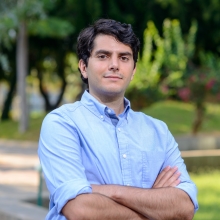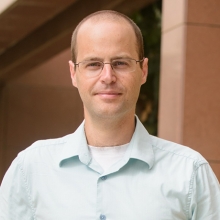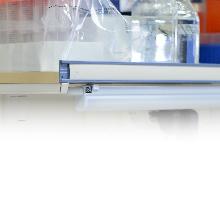Zooming in on the brain
Introducing Dr. Rita Schmidt
New scientists

Dr. Rita Schmidt
Never has the importance of capturing images at just the right time and place been more desirable than today, when every cellphone has the ability to snap a quick picture. Dr. Rita Schmidt brings that same attention to capturing images—but as a scientist, her subject is the human brain.
More than ever before, the face of biomedical imaging is changing, thanks to advances in the use of ultra-high magnetic fields in magnetic resonance imaging (MRI). Studies of the functional activity of the brain are using this increased capability to observe, for the first time in humans, fine-grain details of the visual, auditory, and somatosensory (touch) systems, with an accuracy and resolution undreamt-of a decade ago. It is even possible to capture neural plasticity and connectivity in the context of learning and memory. MRI expert Dr. Rita Schmidt, a newly hired scientist, has come to help shepherd such extraordinary research at the Weizmann Institute.
A decade ago, most brain imaging studies involved magnets with field strengths of 1.5 Tesla (T) or at most 3T. Today, field strengths of 7T and higher are regularly used with small mammals, and the Weizmann Institute is pioneering efforts to apply 7T strength to research involving human study participants—safely and effectively—at the Azrieli National Institute for Human Brain Imaging and Research on campus. The Azrieli Institute’s new 7T magnet arrived and was installed in early 2018 and it’s the second of its type to be installed in the world.
Dr. Schmidt—a former Leiden University Medical Center postdoctoral fellow who worked for several years with the Azrieli National Institute at the Weizmann Institute as a visiting scientist—will apply her expertise in MRI technology to the range of neuroscience experiments planned for the 7T system. Of the many international recruitment offers Dr. Schmidt received, the Weizmann Institute has the clearest advantage from her perspective: the new 7T.
“I’m an ‘integration-person,’” says Dr. Schmidt. “I love to develop tools that integrate different disciplines, such as combining physics and chemistry to study the brain. And I was eager to return to Israel—not only to be near my family, but also because the Weizmann Institute is the only place where I have the opportunity to develop integrated neuroscience tools and apply them to a 7T system.”
From high-tech to academia
Dr. Schmidt was born in Moldova and immigrated with her family to Israel when she was 12 years old. After several years working as a system engineer at the medical device company Insightec—during which time she co-invented four patented systems and methods related to magnetic resonance and ultrasound—Dr. Schmidt returned to academia to earn her PhD in chemical physics at the Weizmann Institute of Science. Her doctoral research, which she conducted under the guidance of Prof. Lucio Frydman, concerned spatiotemporal encoding in 3D ultrafast magnetic resonance imaging. She then moved to the Netherlands to conduct a postdoctoral fellowship at the CJ Gorter Center for High-Field MRI in Leiden, with Prof. Andrew Webb.
Throughout the fellowship, Dr. Schmidt maintained her connection to Weizmann, working as a visiting scientist in the Institute’s Department of Neurobiology. She joined the Weizmann Institute faculty full-time in 2018.
Dr. Schmidt’s research interests include changes in electrical conductivity within the brain. She aims to capitalize on these changes to develop a novel, more direct measurement method of neuronal activation. In her new lab at the Institute, she will also use metabolic spectroscopic imaging to shed light on healthy and diseased brain neural function. These topics go hand-in-hand with her study of fast and high-resolution spectroscopic brain imaging, as well as her pursuit of new advanced and intelligent materials for MRI that allow researchers to zoom-in, as with a magnifying lens, into the brain.








